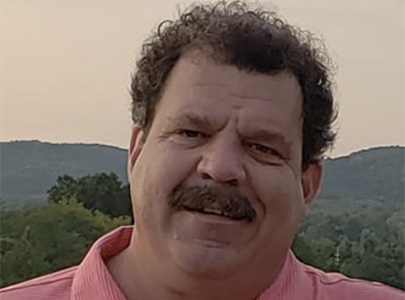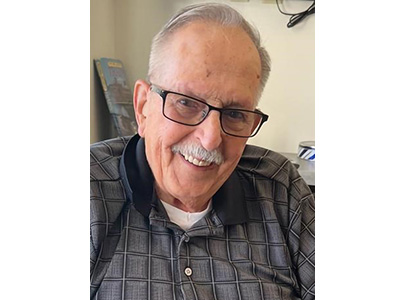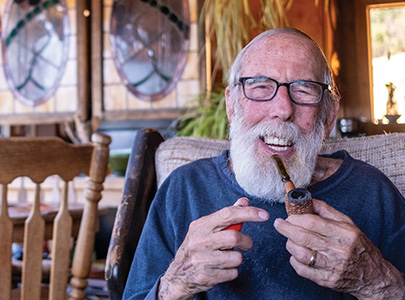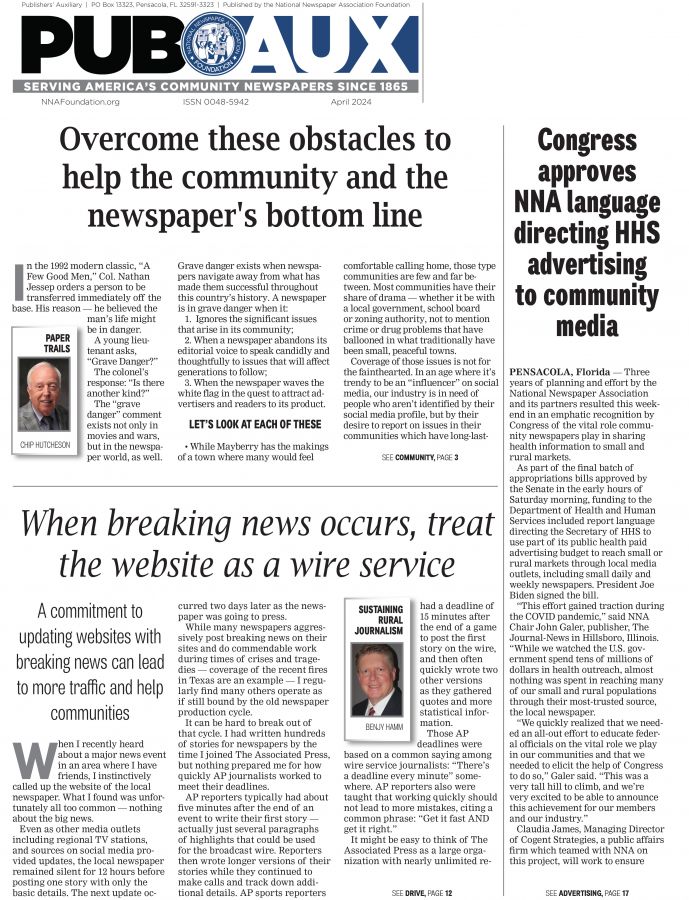Veteran South Dakota journalist provided voice for people who had been ignored
Sep 1, 2022
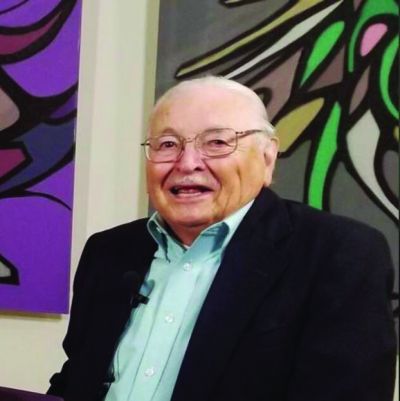
TOM LAWRENCE
Special to the Pioneer
RAPID CITY, South Dakota — Tim Giago seemed unstoppable.
He survived a hellish existence in a boarding school for Native children, served in the Navy during the Korea War, endured decades of racist insults, ignored threats, including gunshots and an attempted fire-bombing of his newspaper office and more.
Through all that, Giago kept writing and publishing newspapers, providing coverage for Native Americans across the nation. He threatened to retire many times, but he was always drawn back to a keyboard and a newsroom.
But that keyboard has gone silent, as Giago died July 24 at Monument Heath in Rapid City. He was 88.
“Indian Country lost an icon.” Those are the words Doris Giago used to describe his passing.
He was a fearless champion for the Lakota people and journalism. For decades, Giago wrote columns, editorials and news stories, founded and published newspapers and worked tirelessly to ensure Native Americans had a voice in the marketplace of ideas.
“He was one of the leading voices in Indian country,” said Doris Giago, his ex-wife and longtime partner in the newspaper business. “He fought for freedom of expression for years. Our newspaper was attacked, fire-bombed. But threats didn’t stop him.”
Together, they founded The Lakota Times in 1981, changing the name to Indian Country Today in 1992. The Giagos operated on hope and hard work, using the collateral of a relative’s 1950s Chevy to lease a former beauty shop in Pine Ridge.
The Lakota Times was the first independent, non-tribal affiliated, Native newspaper in the country. Photos were developed in the hair-washing sink, and locals were hired and trained.
Tim sold the paper to the Oneida Nation of New York in 1998 and then founded The Lakota Journal, which he operated in 2004.
He considered retirement, but the lure of the newsroom, the excitement and thrill of breaking a story, was too much.
“We used to joke all the time that he tried to retire for 20 years,” his daughter Marie Giago of Lawrence, Kansas, said.
In 2009, he and his wife, Jackie, founded Native Sun News. As he prepared to launch the paper, Giago told NPR about his business plan.
“Reservations are isolated. You know, the Pine Ridge Reservation is 100 miles long and 50 miles wide. It is still one of the poorest counties in America, and a lot of the people on a reservation can’t not only not afford a computer, but they sure can’t afford to even pay the monthly internet fees to keep it going,” he said. “So the majority of my readers are going to be those people who read papers the old-fashioned way. They go down to the local store, they buy their paper, they take it home and pour themselves a cup of coffee and sit down and read it. And I think it’s a really erroneous assumption for most Americans to believe that everybody is hooked into the internet because out here in Indian Country, that’s not the case at all.”
Giago tried to retire again last year, writing a farewell column. But he was soon back in harness, writing and editing to get his paper out the door.
For more than three decades, he was a leading voice for ending the use of cartoonish Native American nicknames, logos and symbols by college and professional teams. Giago appeared on “The Oprah Winfrey Show” in 1992 to educate people on how offensive the nicknames and mascots were to many Native people.
Some teams have finally discarded those mascots, including the Washington NFL team, now called the Commanders, and the Cleveland baseball team, now known as the Guardians. Giago wrote numerous columns about the issue and helped persuade at least one Rapid City TV station to stop using the deeply racist nickname of the Washington football team.
Giago was a journalist, but he also was an advocate, and he did not apologize for that. He was always proud of his role in the creation of Native American Day in South Dakota.
“In 1989, we talked about what we could do to help change things in South Dakota,” Giago wrote. “I told the governor that 1990 was the 100th anniversary of the Massacre at Wounded Knee and that South Dakota had been a state for just 11 months on Dec. 29, 1890, the day of the massacre.”
Tim urged Republican governor George S. Mickelson, whose father had struggled with racial tensions when he was governor in the 1940s, to call for a Year of Reconciliation between the races in 1990 and to discard Columbus Day and rename it Native American Day. South Dakota was the first state to do so.
“Gov. Mickelson was a man of vision and great courage,” Giago wrote. “He took my challenge as just that — a challenge to do better for the state he loved.”
It was a courageous stand, but that was nothing new for Giago. When he reported controversial but accurate stories on the simmering and at times explosive tensions on the Pine Ridge Reservation, his office was struck by gunfire three times and was bombed once. An editorial labeled the assailants “cowards,” and the paper kept publishing, despite a lack of support from most South Dakota newspapers.
Giago first gained statewide attention when he wrote a column, Notes from Indian Country, that the Rapid City Journal first published in 1979. Jim Carrier was determined to add a Native American reporter to the staff.
Carrier reflected on hiring Giago and helping him overcome the racism he encountered. “I scoured the country and found fewer than six; all were employed and unwilling to come to western South Dakota. I then learned of Tim Giago, a native of the Pine Ridge Sioux Reservation, who had self-published a small book of poems about his education at the Holy Rosary Indian Mission, a church-sponsored school that squelched language and traditions,” Carrier said. “A Navy veteran, who wrote for a base newspaper, he’d also run a donut shop and aired a local PBS TV show on Indian topics. He asked that it be in the Friday paper, which was widely read on the Pine Ridge reservation because of the TV listings. We paid him $8.50 per column, later raised to $10, as I recall. The result poured gasoline on a fire.”
He said for the first time, Indians were reading about themselves in stories that did not dwell on drunks or car wrecks. That was because Giago wanted to tell readers about the Native Americans he knew and the lives they led.
“He reported warts, yes, but largely provided a portrait of Native Americans with families, traditions, struggles, sports, children, elders, religion, etc. Not many months later, I persuaded him to become a full-time reporter, covering the Pennington County Commission.
“He wanted to cover Indian news,” Carrier said. “I refused, arguing that he could not be objective. That was the thinking in the early days of affirmative action — or at least was mine. Several times, Tim would storm into the newsroom after witnessing the racist attitudes of the white commissioners and quit. I would follow him out onto the fire escape and talk him into staying.
“Hiring Tim as the first Native American voice in South Dakota is among my proudest deeds,” he said.
Giago wrote columns that were published in his papers, other South Dakota newspapers, the McClatchy News Service, and on The South Dakota Standard and The Huffington Post blogs.
He provided readers with strongly written columns that showed a deep understanding of history, not just Native American history. He wrote with passion and anger at times but could also produce pieces with warm reflections on family, friends and colleagues.
His papers covered housing discrimination, banks charging Native Americans excessive interest rates for loans, exposed bogus “medicine men,” and revealed the troubling racial histories and comments of the four presidents depicted on Mount Rushmore in the heart of the Lakota’s sacred Paha Sapa.
The American Indian Occupation of Wounded Knee and the violent clashes between AIM and tribal officials was a hot topic in South Dakota and across the nation, but Giago covered it without taking a side. He criticized excessive actions while praising efforts to expose racism and discrimination.
DEFENDER
Giago was born in Kyle, or Pejuta Haka, translated to “Medicine Root,” on July 12, 1934.
His parents, Tim and Lupita, had seven children, and Tim grew up with five sisters and a brother. The family had both Lakota and Pueblo ancestry, and the name Gallego, which has Spanish derivation, was converted to Giago.
As a 5-year-old, Giago was dropped off at the Holy Rosary Indian Mission, or Red Cloud Indian School, located on the Pine Ridge Reservation. It was, he recalled, a hellish place for Native children.
They were abused, both physically and sexually, Giago said, including his 9-year-old sister, Shirley. She lived with a deep rage and resentment, trapped by anger and alcohol before telling Giago and her children on her deathbed of the abuse she suffered.
Giago said while he appreciated the education he received from the Jesuit priests and Franciscan nuns, he was sad and depressed by the exile from his family and culture. For 10 years, he saw friends suffer and in some cases, die.
“I recall being loaded into the back of a truck along with as many boys that would fit in that truck, taken to the potato fields at Mission Flats, having a gunny sack attached to my waist, and then dragging that sack until it was so full of potatoes that I could no longer drag it. I was 10 years old. All the boys working alongside of me were the same age,” Giago wrote. “The following week, we were again loaded into trucks and driven to Buffalo Gap, where there were miles and miles of apple orchards. We worked all day for two days picking apples.”
He recounted stories from his boarding school years in the 2006 book, “Children Left Behind: The Dark Legacy of Indian Mission Boarding Schools.”
His first book, primarily a collection of poems about his experiences, was started when he was 17 and aboard a troop ship headed to Korea. Giago had left the boarding school to join the military and serve during the Korean War, preferring combat to the tortures and miseries of the school. The book was finally published in 1977 and titled “Aboriginal Sin.”
In addition to those two books, Giago wrote “Notes from Indian County, Volumes 1 and 2,” and was working on a memoir, which he planned to title “Indian Country Today,” in his last year.
Giago ran away from the boarding school when he was in 11th grade. But while those painful memories were with him his entire life, so was his pride in his roots and the history of his people.
When he returned from Korea, Enos Poor Bear gave him his Lakota name, Nanwica Kciji, translated as both Stands Up for Them and Defender, in an inipi (sweat lodge) ceremony to celebrate his safe return.
Giago led an adventurous life before winding up in a newsroom. He operated a doughnut shop in Reno for a while before returning to South Dakota.
Giago was married several times — his daughter, Marie, said he avoided a direct answer when asked — and had 10 children — nine daughters and a son. One daughter, Roberta, whom he called “Birdie,” was killed in a one-car crash in New Mexico on April 6, 2006.
Marie Giago said he was very content in recent years, enjoying romantic movies with his wife.
“He found his true love in Jackie,” she said.
Marie Giago said she is proud of his career and legacy, but she also wanted to reflect on the kind of father he was to her and her siblings.
“I just knew him as Dad, the man I spent every summer with. We had wonderful summers in the Hills,” she said. “He could swim across the pond with one breath, and I thought that was the most wonderful thing. I tried to do that.”
She said her father insisted they try new things, including food, introducing them to the use of chopsticks. They rode horses and sometimes fell off them, she said with a chuckle.
When he was 70, Giago had heart bypass surgery, and his children gave him a cat, which they named Pod for the Cabbage Pod heart unit he had been in. They wanted him to have company, but at first he loathed the kitten who jumped on his lap, piercing him with its sharp claws.
But they soon grew inseparable, and Giago would watch TV news at night with Pod on his lap. The cat died a few weeks ago, Marie said, and she realized her father was likely in his final days, as well.
She said Tim Giago first learned he was a gifted writer when he turned in a paper at boarding school and a priest insisted he must have copied it because since it was so well done. That just made him more determined to have his voice heard.
“I think everything he’s done for journalism and Native people in general, being our voice,” she said.
Giago accumulated many honors, including being the recipient of the H. L Mencken Award for editorial writing in 1985. However, in 1989, he returned the award and a $2,500 cash prize when some racist writing by Mencken, a notoriously ill-tempered man and writer, surfaced.
“I feel very strongly that everything that I have fought for in the last 20 years to try and improve race relations … It just wouldn’t wash if I … kept an award from a person that has attitudes that are so bigoted,” Giago said.
He was a Nieman Fellow at Harvard in 1990-91 and was named to the South Dakota Hall of Fame and the South Dakota Newspaper Hall of Fame. His papers piled up plaques and honors, but Giago said his primary satisfaction was seeing people reading the paper.
Chuck Woodard of Brookings, a South Dakota State University professor emeritus of English, met Giago at a conference featuring tribal leaders that he organized at SDSU in the fall of 1989.
“I subscribed to his highly informative newspapers for many years and learned a great deal from them for my teaching and for the cross-cultural work I was often doing,” Woodard said. “Tim was quite singular in his extraordinary persistence in making tribal voices heard, and so he contributed significantly to the re-education of his many readers in America and abroad on the team name controversy and on many other equally important issues. I’m reminded of these lines from a poem about a grizzly bear: ‘There are some things in this world which will not be put off.’ Tim was one of those things.
“His legacy will be his courageous and inspirational journalism and his fighting spirit, which, as far as I could tell, never diminished throughout his long and exceptionally productive life,” he said.
Giago wanted other Native Americans to write and report. He helped found the Native American Journalists Association in 1983 and served as its first president.
“The impact Tim had on Indigenous journalism as one of NAJA’s founders is immeasurable. He has been a champion of free press in Indigenous communities his entire career and faced challenges, threats and political pressure, but always pushed to bring essential news and information to the people. He’s irreplaceable,” Rebecca Landsberry, the organization’s executive director, told Indian Country Today on Sunday. “I know generations of Indigenous journalists will look to his dogged dedication to the truth for decades to come and be inspired by his tremendous legacy.”
South Dakota Newspaper Association Executive Director David Bordewyk said Giago “leaves an incredible legacy in newspaper journalism not only in South Dakota but nationwide” despite numerous challenges.
“Tim and his newspaper withstood firebombs, office windows shot out and multiple threats on his life. But he persevered,” Bordewyk said. “Along the way, he would often prod his peers among South Dakota’s newspapers and nationally to be more understanding and interested in the challenges and struggles indigenous people face every day. His weekly column often became a clarion call to overcome racism, poverty and hardships on the reservations in our state and beyond.
“I was privileged to listen to Tim give a keynote speech during the 2019 national convention of the Native American Journalists Association,” he said. “As he told the audience, he chose to become a journalist because of two words: truth and justice. Afterwards, it was inspiring to see young Indian journalists in the room line up to meet Tim and shake his hand. They were in awe of him.”
Bordewyk said Giago at times challenged him to do better in understanding the overt and subtle racism in the state.
“He could do so in no uncertain terms and sometimes leave me feeling uncomfortable, but that was OK,” he said. “We were friends, and I knew he was fighting for truth and justice. He never stopped doing so. I will miss him.”
BATTLING POLITICIANS
Giago often wrote about politics. He was a Republican for most of his life, HE but grew disenchanted with the party in recent years.
Gov. Kristi Noem provided a statement Sunday night, acknowledging Giago had criticized her at times, as he did all politicians.
“Tim Giago and I did not always see eye to eye, but I respected him as an independent thinker, journalist and successful businessman,” Noem said. “He also served our country with honor, having joined the Navy at age 17. His passing is a loss for all of the nation, especially South Dakota. My condolences to his family and many loved ones.”
Sen. Mike Rounds said Giago was a historic figure.
“Tim Giago was a Native American trailblazer in journalism,” Rounds said. “History will remember him as not only a journalist but as a person of real influence in regard to public policy.”
Rep. Dusty Johnson said Giago left an enduring mark on his home state.
“Tim dedicated his life to journalism and Native American issues,” Johnson said. “He was never afraid to engage in spirited dialogue with South Dakota’s Congressional office. His legacy will live on through the Lakota Times and Native Sun News.”
Former Sen. Tom Daschle, a Democrat, knew and worked with Giago for four decades.
“It is with great sadness that I have learned the news of Tim Giago’s passing,” Daschle said. “It was my good fortune to know him for over 40 years. I considered him my friend. He set a very high bar for integrity, journalistic advocacy and persistent determination on behalf of Native American people. In so doing, he earned the respect and admiration of all those fortunate to know him and to benefit from his work.”
He said Giago’s death will be felt deeply. “We have lost a good man,” Daschle said.
Former U.S. Attorney Brendan Johnson said Giago was a newspaperman in the classic sense of the term. “No one was better at comforting the afflicted and afflicting the comfortable than Tim Giago,” Johnson said. “His legacy will be felt for seven generations and is evident in today’s tribal leaders who will continue his fight for racial justice and reoperations for the sins of our past and present.”
Rapid City Mayor Steve Allender, who Giago criticized at times, issued a statement acknowledging the impact he made and the legacy he leaves.
“I am saddened to learn of the passing of Tim Giago. Tim’s influence and impact on journalism and Native American life cannot be overstated,” Allender said. “His views and dedication to journalistic excellence were well-respected nationwide. His career was dedicated to providing quality journalistic vehicles to feature and profile important stories of Native American life and culture, and to focus on, address and highlight issues of importance. Tim was the first to provide newspapers where Native Americans could express and share their opinions, to provide stories on important events and issues and to feature Native traditions, culture and ideas.”
TRIBAL LEADERS HEEDED HIS WORDS
Great Plains Tribal Chairmen’s Association Executive Director A. Gay Kingman said Giago’s ability with words contributed to the strength of our tribal nations.
“Tim was always a trailblazer and a visionary. In the Lakota culture, we have virtues given to us, and Tim especially exemplified the qualities of perseverance, love of his people, truth, bravery and fortitude,” Kingman said. “He never gave up. Tim’s ability with words was legendary. He had a grasp on what was happening on the reservations, but also within the country and with politics in the nation’s capital. He brought news home to all of our rural and isolated communities so people were able to react as needed.
“No one was immune from his particular brand of using words to appreciate, inform or ‘cut and dice,’” she said. “Many of the politicians were on the receiving end of his words, and he was always correct and people agreed with his comments. In some cases, he forced positive change. He inspired others and trained many to write and start their own newspaper establishments. Sometimes writing the truth didn’t go over very well, and through the years, he was threatened many times but this only served to embolden Tim Giago. His establishments flourished, sometimes in a new location.”
Kingman said tribal leaders knew and respected Giago and were aware that his goal was to reveal the truth to his readers.
“When Tim fell ill, there were many prayers and ceremonies held,” she said. I was able to speak with Tim and inform him about the prayers being held for him, and he appreciated the tribal leaders. I will miss my friend and our discussions, and our tribal nations will miss his special brand of writing to tell our stories.”
Doris Giago, who was a longtime reporter and editor who also worked as an SDSU journalism professor, said Tim Giago’s final months were difficult. “He had his right leg amputated at the end of May. Since then, he had setbacks in his recovery,” she said. “He got an infection and that led to complications. He was very frail at the end.”
Marie Giago said colon cancer was discovered this spring, and that soon spread throughout his body. Giago was hospitalized in May and remained there until his death.
Remi Bald Eagle, intergovernmental affairs coordinator for the Cheyenne River Sioux Tribe, and leader of Anukasan Hopeča Tíwahe, said his family was deeply saddened, and their thoughts were with Jackie Giago and all who loved Tim and considered him a friend.
“Tim had a great influence on my wife and I. Alaina loved working for Tim, and his encouragement allowed her to blossom as a journalist in Indian country as she wrote for Native Sun News” Bald Eagle said. “His words have always been an influence on me and provided the theme for my understanding of the challenges South Dakota and my Lakota people must face. He will be missed by those that have had the honor of knowing him, and his legacy will live on in the institutions he has built and the lives he has influenced.”
It’s only fitting to give the master wordsmith the closing remarks. In a column he wrote for his 87th birthday in July 2021, Giago reflected on his life and career.
“It’s been a grand ride for the 41 years I published my newspapers, and a grander ride for the 87 years that have brought me to this point in my life,” he wrote. “I have met many good people, made many good friends, and I am sure, made a few enemies along that bumpy road.”


